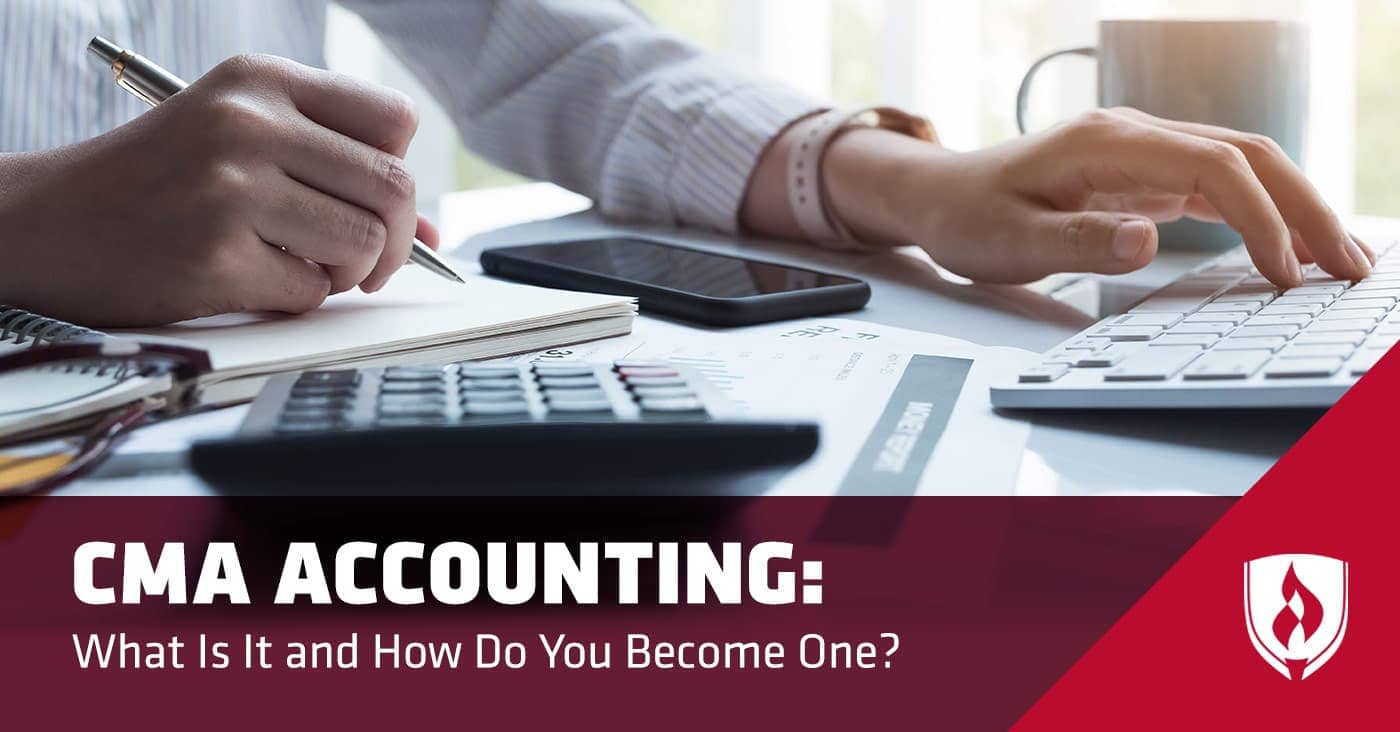
With your head for numbers and your natural attention to detail, you’re pretty confident that you were made for a career in accounting. However, you still have some questions about different aspects of this field.
You’ve seen a lot of talk about the Certified Management Accountant® (CMA) credential, but you’re still not sure of the requirements for becoming a CMA, much less what it really means to be a management accountant.
How do you become a CMA? What does a CMA do? You’ll already have to spend time and money on your accounting education. You don’t want to add the work of becoming a CMA if it isn’t necessary for your career!
We’re giving you the lowdown on what it means to be a Certified Management Accountant and how to become one if it fits your accounting career goals. Read on to get the full accounting of what it means to be a CMA.
What is the CMA credential?
The CMA credential is an appealing professional credential for accountants aiming to participate in their company’s leadership roles and guide corporate financial decisions. Earning a professional credential like the CMA can help build your credibility and potentially position you for leadership positions in the field.
This credential signifies that an accountant has achieved a certain level of management skills and business strategy acumen to be trusted with large financial decisions. CMA accountants have the advantage of being able to prove at a glance that they’re capable of driving financial decisions for an entire corporation.
What does a CMA do?
While you can earn a CMA credential at any stage of your career, the ideal fit is for accounting and finance professionals that are in a position to make strategic financial decisions for a company. These are just some of the job duties a management accountant could handle for their corporation, according to U.S. Department of Labor:1
- Prepare and analyze data
- Conduct financial planning and budget analysis
- Advise company leaders on financial strategy
- Supervise lower-level accountants
- Perform risk-management analysis to make wise investment decisions
- Analyze the company’s profitability
- Predict future financial trends
Where does a CMA work?
All companies need accountants with strong business skills and strategic thinking to help lead their organization to a strong financial future. That means CMAs can work in corporations across all types of industries, including technology, healthcare and finance. Management accountants are also in demand in government and the nonprofit sector.
A CMA’s work environment will most likely be similar to other types of accountants. They typically work standard business hours during the week, with the potential for a longer workweek during busy times, such as at the end of a fiscal year or reporting period.
Why become a CMA?
It’s clear that CMAs are trusted financial professionals. Thanks to their rigorous testing and strict ethical standards, employers know that accountants who hold the CMA designation are serious about their career and have the business skills it takes to make smart financial decisions.
Of course, working in a management position typically comes with a higher salary. Robert Half adds that “professionals with an industry-recognized designation can expect starting salary offers to be higher than the market average.”
How to become a CMA
CMAs are entrusted with a lot of responsibility, so these accountants must follow a specific process to prove their worth. The good news is, earning a CMA credential isn’t as intimidating as you might think!
We’ve broken it down into simple steps so you can see exactly what the certified management accountant requirements are.
Step one: Earn your Accounting degree
The first step is straightforward: earn a bachelor’s degree in Accounting from an accredited college or university. This gives you the foundational knowledge you need to work in any accounting position.
Students in the Rasmussen College Accounting program take courses that are directly applicable to a career as a CMA, including these:
- Managerial Accounting Theory and Practice
- Corporate and International Accounting
- Strategic Management
- Risk Management for Accountants
Step two: Gain relevant professional experience
Working in the field shows that you have the ability to apply your education to real-world scenarios, which is why accountants must have two continuous years of professional experience before they’re eligible for the CMA credential. However, you can take the certification exam while working toward you experience requirements—you just won’t be awarded your CMA credential until you’ve proven that you’ve gained the experience you need.
This experience should be directly related to management accounting or financial management, performing tasks such as auditing, budget preparation and cost analysis. This gives you the opportunity to put your education to work and earn a salary while you continue growing your accounting skills on the job.
Step three: Become an IMA member
The IMA—Institute for Management Accountants—is the organization that offers the CMA credential. Joining this professional organization not only makes you eligible to take the CMA credential exam, it also comes with other benefits, such as opportunities for continuing education and networking.
The professional level of IMA membership will typically have a yearly fee, but many corporations may be willing to cover enrollment costs for their employees. Check with your employer to see if they offer this benefit.
Step four: Pass the certification exam
Once you’ve met all of the above eligibility requirements, you’re ready to sit for the CMA exam. The exam is broken into two parts, with Part 1 focusing on financial planning, performance and analytics, and Part 2 on strategic financial management. Each part takes four hours to complete and includes 100 multiple choice questions and an essay section.
A test of this caliber may seem daunting, but passing it is an achievable goal if you commit to a study plan. The IMA suggests 150 hours of study for each part of the test, and they offer courses and other resources to help you prepare. You have three years to complete both parts of the exam, so you don’t have to feel rushed in your studying.
Step five: Maintain your CMA credential
Once you have your CMA certificate in hand, the hard part is over! To keep your credential up to date, you’ll need to maintain an active IMA membership and complete 30 hours of continuing education each year.
CMAs are also held to a high ethical standard, so you need to stay in compliance with all local and federal finance laws as well as the IMA’s Statement of Ethical Professional Practice.
Accounting for your future
Now you have answers to your burning questions about CMA accounting. Are the numbers adding up to a future career as a CMA credentialed accountant? Earning your degree is the first step, so get started by learning about the Rasmussen College Accounting Bachelor’s degree program. Also check out the qualities of an accountant.
Certified Management Accountant is a registered trademark of the Institute of Certified Management Accountants.




